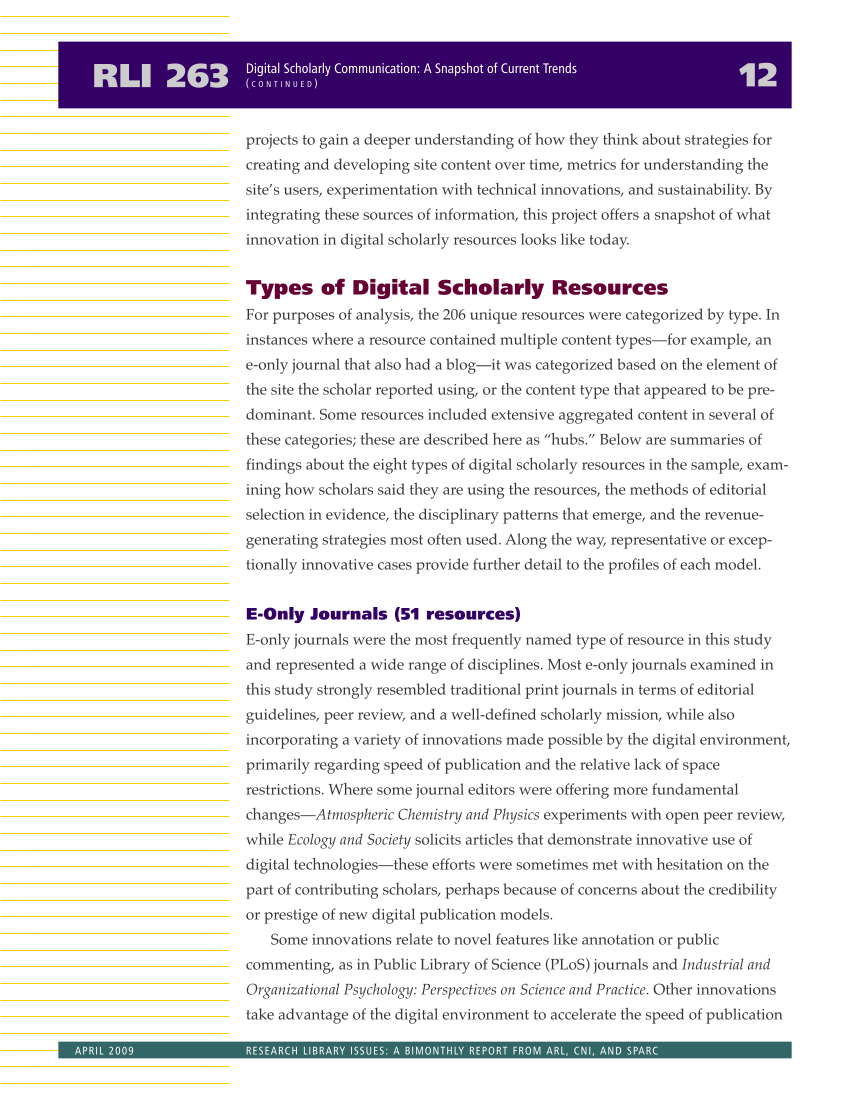projects to gain a deeper understanding of how they think about strategies for creating and developing site content over time, metrics for understanding the site’s users, experimentation with technical innovations, and sustainability. By integrating these sources of information, this project offers a snapshot of what innovation in digital scholarly resources looks like today. Types of Digital Scholarly Resources For purposes of analysis, the 206 unique resources were categorized by type. In instances where a resource contained multiple content types—for example, an e-only journal that also had a blog—it was categorized based on the element of the site the scholar reported using, or the content type that appeared to be pre- dominant. Some resources included extensive aggregated content in several of these categories these are described here as “hubs.” Below are summaries of findings about the eight types of digital scholarly resources in the sample, exam- ining how scholars said they are using the resources, the methods of editorial selection in evidence, the disciplinary patterns that emerge, and the revenue- generating strategies most often used. Along the way, representative or excep- tionally innovative cases provide further detail to the profiles of each model. E-Only Journals (51 resources) E-only journals were the most frequently named type of resource in this study and represented a wide range of disciplines. Most e-only journals examined in this study strongly resembled traditional print journals in terms of editorial guidelines, peer review, and a well-defined scholarly mission, while also incorporating a variety of innovations made possible by the digital environment, primarily regarding speed of publication and the relative lack of space restrictions. Where some journal editors were offering more fundamental changes—Atmospheric Chemistry and Physics experiments with open peer review, while Ecology and Society solicits articles that demonstrate innovative use of digital technologies—these efforts were sometimes met with hesitation on the part of contributing scholars, perhaps because of concerns about the credibility or prestige of new digital publication models. Some innovations relate to novel features like annotation or public commenting, as in Public Library of Science (PLoS) journals and Industrial and Organizational Psychology: Perspectives on Science and Practice. Other innovations take advantage of the digital environment to accelerate the speed of publication RLI 263 12 Digital Scholarly Communication: A Snapshot of Current Trends ( C O N T I N U E D ) APRIL 2009 RESEARCH LIBRARY ISSUES: A BIMONTHLY REPORT FROM ARL, CNI, AND SPARC











































